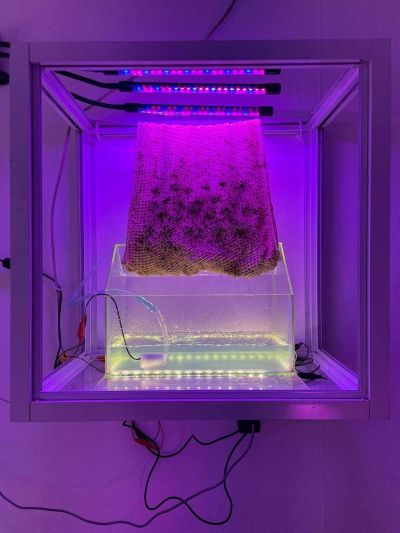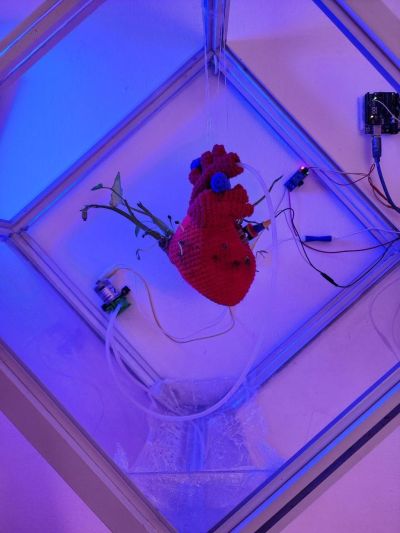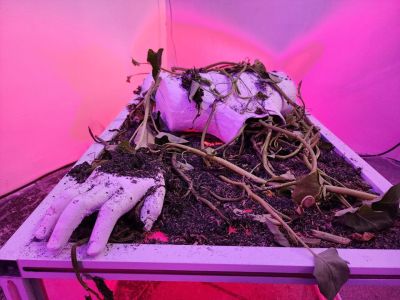Kangkong as the symbol of resilience? Why not?
The bioSignals PH team successfully ran the multimedia exhibit at NO community-run art space in Diliman, Quezon City last 08-15 October 2024. bioSignals is an artistic and cultural exchange that bridges three island nations – New Zealand, the Philippines, and the UK – through the real-time collection, processing, and transmission of signals generated from local plant life.
The bioSignals exhibit offered an experience that blended art, plant technology, and storytelling. It featured art installations of the team members, designed to reflect different societal issues, focusing on the resilience of the Kangkong plant (Ipomoaea aquatica). Though often overlooked as a common vegetable, kangkong holds deep sociocultural and scientific significance, representing adaptability in Filipino culture by thriving in challenging environments.
The bioSignals team are composed of FICS faculty and researchers at the UP Intelligence Systems Center (ISC) – Dr. Diego Maranan, Asst. Prof. Blancaflor Arada, Dr. Shari Eunice San Pablo, Mr. Jerome Suplemento, Mr. Gino Javier, and Ms. Patricia Calora.
 What resilience really meant
What resilience really meant
Dr. Maranan’s exhibit Resilience Requires Renewal stood out for its powerful message on the importance of support systems in resilience. He represented these systems through running water, grow lights, crocheted fabric, and chia seeds, which help the resilient plant thrive. “Even though plants can grow in surprising and unlikely places, their survival and growth are not purely a testament to their own strength. They rely on a network of nurturing factors—the water, the light, the fabric, and even the chia seeds. This mirrors human resilience; humans, too, are often celebrated for our ability to withstand hardship or adapt to change, especially when living in the harsh or resource-restricted contexts of the Global South.” Dr. Maranan said.
Dr. Maranan added that rarely is our resilience solely a matter of individual strength. “Like the plants in this piece, we are supported by external systems: our communities, our environments, and the structures around us.”


Ms. Patricia Calora’s display Life Between the Gaps attracted much attention, showing kangkong growing in an imperfect environment—a deliberately flawed crocheted heart. The piece illustrates how growth and survival often emerge from spaces of vulnerability. “ “By combining natural and synthetic materials, this piece aims to reflect the complex environments in which life exists, where adaptation is key Ms. Calora said.
In Cycle of Decay, Dr. Shari Eunice San Pablo depicted the relationship between nature’s resilience and human violence inspired by the Filipino phrase “mabulok sa kangkungan”, which derives its meaning from the victims of Martial law extrajudicial killings commonly found in Kangkong fields. “My work echoes the cruel irony of how humans exploit the very resilience of nature. Kangkong, known for its ability to clean toxins from water and grow in the harshest conditions, has paradoxically become associated with concealing the evidence of violence… Yet it also questions the nature of resilience itself. Is the ability to withstand trauma really something to celebrate? At what point does resilience become a euphemism for being repeatedly victimized?”
Interdisciplinary, involving community
The exhibition uses an interdisciplinary approach to tell the story of kangkong, combining plant signals, environmental adaptation, and cultural meaning to highlight resilience. By translating the silent language of plants into a universal dialogue, the exhibit bridges geographical boundaries.
The exhibit attracted academic students and staff, fellow creatives, and local community members. Guests had the opportunity to engage with Dr. Maranan and the team and ask questions about their creative process and the technologies they used to bring their ideas to life.
The exhibit concluded on 15 October with a visit from the British Council Philippines. Parts of the exhibit are being considered to be displayed for the upcoming SiyenSaya Science Festival of the Los Baños Science Community Foundation, Inc. (LBSCFI) this December.
Written by Joy Rebulanan and Roda Tajon ♦ Contributed by FICS








